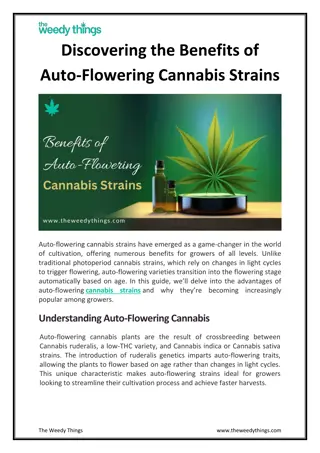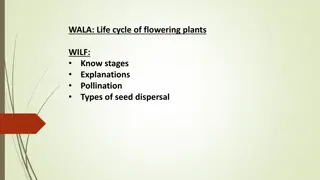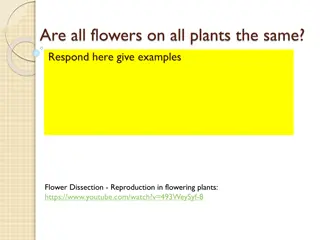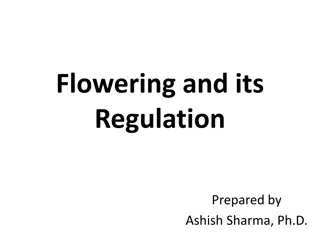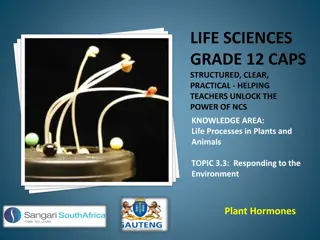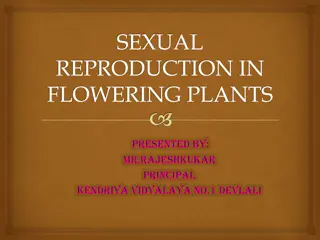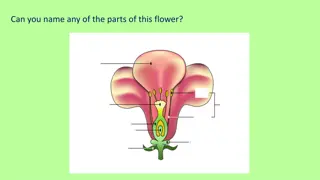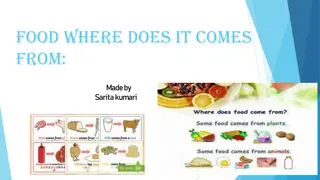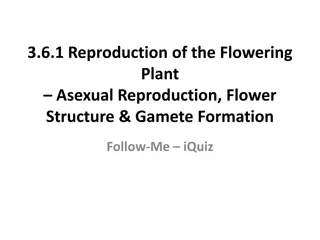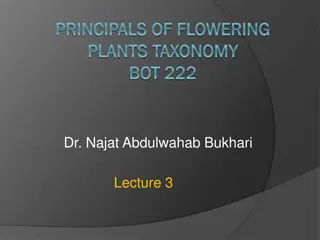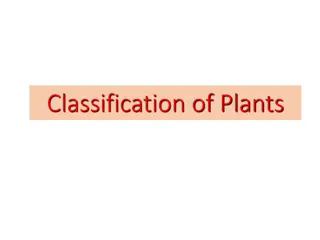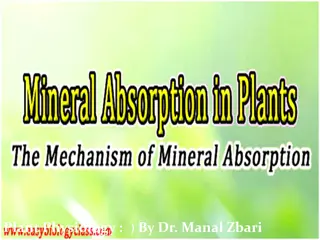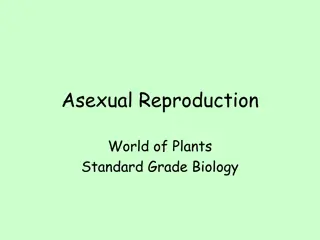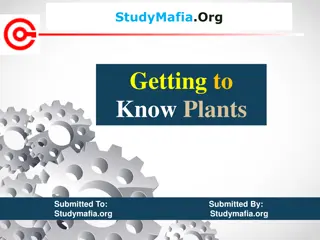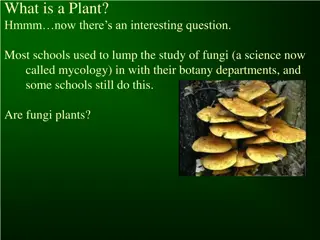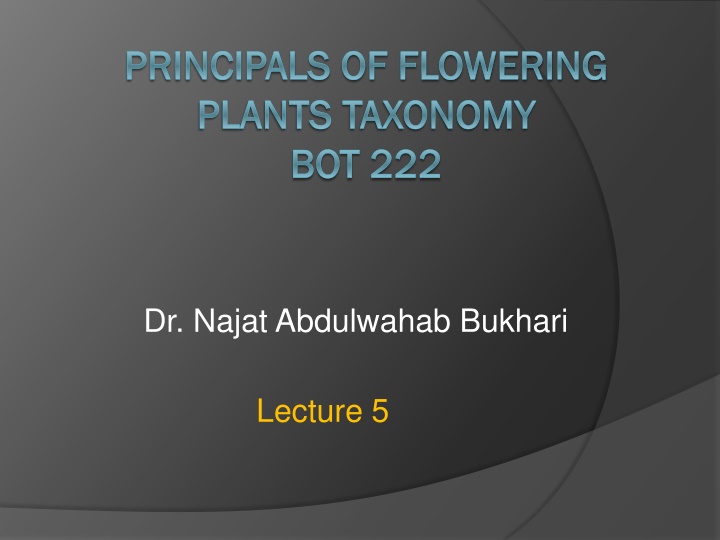
Plant Taxonomy and Flowering Principles
Delve into the world of plant taxonomy and flowering principles with a focus on historical reviews, nomenclature, and classic taxonomy concepts. Explore the intricacies of flower reproductive structures, fruit types, and fertilization processes. Uncover the different connective types in stamens and their significance in plant reproduction.
Download Presentation

Please find below an Image/Link to download the presentation.
The content on the website is provided AS IS for your information and personal use only. It may not be sold, licensed, or shared on other websites without obtaining consent from the author. If you encounter any issues during the download, it is possible that the publisher has removed the file from their server.
You are allowed to download the files provided on this website for personal or commercial use, subject to the condition that they are used lawfully. All files are the property of their respective owners.
The content on the website is provided AS IS for your information and personal use only. It may not be sold, licensed, or shared on other websites without obtaining consent from the author.
E N D
Presentation Transcript
PRINCIPALS OF FLOWERING PRINCIPALS OF FLOWERING PLANTS TAXONOMY PLANTS TAXONOMY BOT 222 BOT 222 Dr. Najat Abdulwahab Bukhari Lecture 5
University Vision and Mission Vision: To be a world-class university and a leader in developing Saudi Arabia s knowledge economy Mission: To provide students with a quality education, conduct valuable research, serve the national and international societies and contribute to Saudi Arabia s knowledge economy through learning, creativity, the use of current and developing technologies and effective international partnership.
Botany department Vision and Mission Vision: upgrading the academic and research to keep pace with scientific progress and requirements of society. Mission: Development of Academic process and develop scientific research through strategic planning and a clear vision for science and technology at the country level. As well as training of national cadres, and the introduction of a methodology developed to meet the different needs of society, and to serve the various research and developmental projects in the community
Course Description Course Description Topics to be Covered Topic No of Weeks Contact hours 1 2 - Historical review of plant taxonomy (industrial , natural, evolution) - Nomenclature - Classic taxonomy (morphological taxonomy of vegetation and floral characters Fruits and seed characters. - Key to taxonomical unites. - Fertilization and seed formation - The different kinds of fruits - The sexual differentiations of flowers and their fertilization 1 5 2 2 1 2 2 2 2 2 2 2 14 14
connective connective The part of the stamen joining the anther cells: Types of connective: 1. Attached by the back, Dorsifixed , as in Mangnolia.
2. attached at the base, (Basifixed) ,as in most of the floral plants (Ranunculaceae )
3. Medifixed, as in Graminacea family, most of this family is wind pollination
4. Andenate :fusion or united stamens, http://upload.wikimedia.org/wikipedia/commons/thumb/3/36/Primula_vulgaris_ENBLA06_2.jpg/220px-Primula_vulgaris_ENBLA06_2.jpg
Plant classification scientists rated flowers with few stamens number (five or more) more revolutionary than flowers with large number of stamens. When anthers are few in number it gives stronger pollen grains and more resistant to the external conditions. While more stamens number weaken gives less strength and resistant pollen grains and less energy in the pollination process.
Anther Anther is a bi-lobed structure consists of two lobes linked by Connective . Each lobe has cavity (pollen chambers or sacs ) winch carries large number of pollen grains. Anthers are rarely consists of one lobe, as in the Cucurbitaceae Malvavceae family. Anther may not contain pollen grains, as in some Senna stamens (Cassia Angustifolia)
Anther structure Each spore sac is covered from the outside with: 1. A tissue layer ( protective). 2. Inside of this layer fiber cells Fibrous layer . The fibrous layer consists of helps in dehiscence. 3. After the fibrous layer comes few intermediate layers (storage). These tree layer are the (outer exine) 4. then the Tapetum tissue (Nutritive layer) as it cells produce food for the grains, surrounding the pollen grains cavity. (inner intine)
a typical angiosperm anther is tetra- sporangiate. It consists of an anther wall and microspore mother cells. These microspore pollen mother cells are diploid and undergo meiosis. Each microspore mother cell divides meiotically to form four haploid microspores. Therefore, each cell divides into four pollen grains.
Anther development Pollen differentiation. Anther enlargement Tissue degeneration Dehiscence and pollen release. grain and sperm cell
Anther development opening up of anthers differ according to the plants and the environment in which they live : 1. Longitudinal, as in most of plants
Anther development mechanism: Anther development mechanism: Attributable anther development to the Fibrous layer, where it is not even in thickness. When its dry , the outer tissue becomes dry too and loses water, then cells shrink as a result of water lost, this causes to open along the lateral line that separates the pollen sacs in each lob.
In every lobe there is linear line , which is the opening line and is called the ventral surface. The other side represents the dorsal surface. If the ventral surface is heading towards the pistil , then the anthers are called Entrose . If the line is towards the calyx then the anthers is called Extrose
Some anthers may head towards the pistil while others towards the corolla in the same flower. internal and external openness at the same time. The number of stamens varies from one plant to another as some flowers, plants contain: 1 - just two stamens as in the olive 2 - only one stamen, as in the plant Alsntrutc


